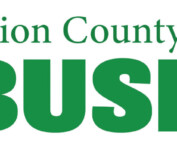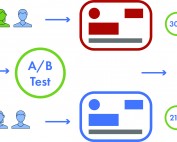At Direct Development, we are constantly looking for new ways to leverage PR and marketing techniques, not just for brand awareness, but for identity. Our work on behalf of our clients is driven by the desire to reach the right market, lead the community, amplify awareness, and impact our audiences.
What we’ve discovered over our years of experience is that achieving those goals can be broken down into five key opportunities we seize on. We have found these strategies to be the some of the most effective in building our clients’ brand and identity.
5. Social Media
Of course social media makes it into the top five. Although it’s fifth on the list, social media is one of the most important tools for marketing and brand awareness, regardless of organization size. There are many benefits to leveraging social media, which have been discussed extensively over the years (and if you’re reading this, odds are you already know that social media is important). So let’s quickly review the benefits of maintaining an online presence through social media:
- Social media is, for the most part, free to use
- Social media is an automatic database, housing all published content forever
- Social media provides a platform for an organization to speak directly to its audience, but it also grants their audience the ability to speak back
- Social media can quickly and easily show web traffic trends and patterns, and offers affordable options to boost visibility and promote branding
- Social media can build brand loyalty, based on positive interactions
4. Social Responsibility

At its core, Social Responsibility simply asks, “What is in the best interest of society in the present and long term?” Social Responsibility suggests that any organization contributing or producing products or services has an ethical obligation to act in the benefit of society as a whole. In larger corporations, we see examples of social responsibility in Amazon’s corporate employment benefits, Apple’s environmentally friendly distributor and user privacy programs, and Google’s workforce diversity.
But social responsibility isn’t just for the big kids, and neither is the marketing initiatives that promote corporate ethics. Direct Development works primarily with local private and public sector entities to promote their brand and outreach, and so social responsibility at the local level can require a bit more creativity.
One of the most effective strategies in local-level social responsibility is through Community Engagement.
Community Engagement can come in many forms, but starts with an active online presence. One of the best methods to achieve this, as mentioned above, is social media. Social media is one of the most impactful platforms for keeping your audience up-to-date, so maintaining an active presence through the internet can greatly impact your organization’s image.
But, it’s not the only method of community engagement. Where local papers and town bulletin boards have felt the impact of the internet, newsletters and email blasts are still very popular (in moderation). Promoting announcements or initiatives through blog posts, online calendars, and newsletters keeps your audience in-the-know on your organization, and a powerful message can leave the kind of impact an organization is looking for (more on that below).
3. Media & Press Relations
But first, effective marketing must utilize the relationship between public relations and the press. Although local news organizations may have shrunk as a result of the internet, they are no less influential in molding town-happenings, conversations, and community perception as a whole. Building a line of communication with local news reporters, editors, and their advertising teams can lead to long-lasting relationships and fairer coverage of your clientele.
The local news can help promote the identity of an organization simply by reporting on it, publishing press releases, or print ad space. And, for local news, many of the events or information an organization wants to spread can be newsworthy, filling columns that maintain their own image and relevance in the community. Some examples of win-win events could be:
- Community-wide clean-up programs (#trashtag)
- Sponsorships for local or town events
- Volunteer work in the aftermath of local tragedy
- Advocacy or activism on local issues
2. Search Engine Optimization Optimization
Search Engine Optimization (SEO) has quickly become the de facto technology to determine an organization’s relevance and popularity online. Poor SEO can quickly lead to low traffic for a brand or idea, which will mean less and less of your audience is impacted or even seeing your message!
There are software platforms built specifically to strengthen an organization’s search engine optimization, but taking it a step further will not only improve website rankings online, it will also improve the structure and usability of an organization’s website. And that work starts in the Content Management System (CMS), or the software hosting your website. Or, optimizing your search engine optimization.
WordPress, SquareSpace, Joomla, and Wix are all CMS software. Within each of these platforms is the ability to incorporate plug-ins specifically built for SEO. But, in addition to using SEO software, the structure of the website has its own impact. If an organization’s website is updated frequently with announcements, blog posts, or information, it needs to be easily accessible. Leveraging categories, tags, menus, and file paths make it easier for visitors to navigate your website. Clean, contemporary design layouts are friendlier and more approachable, increasing the number of visitors who will return to your site.
Once an organization has decided on an SEO platform, leveraging its’ features for each post or announcement will increase that page’s ranking on search engines such as Google. SEO platforms often have tips (or even hidden features) for increasing performance, but here are a couple:
- Multiple key phrases
- Meta descriptions
- Hyperlinking in the blog posts
- Quick, digestible sentence structure
1. Effective Storytelling
You scrolled through this entire article because it was a countdown, didn’t you? Effective storytelling can be as simple as laying out your blog post or article in a countdown so as to keep the reader’s attention. Just like in sports, a countdown is used to heighten the response time of an individual. Countdowns leverage an instinctive sense of urgency, so reading through an article structured as a countdown keeps the reader engaged. It also heightens their attention to the article, increasing the probability that readers stay on your site.
The most captivating stories are personable. They are relatable to your audience. And they give your audience a reason to keep reading, or listening. And, as HubSpot explains, storytelling leverages so many techniques that marketers are already familiar with:
| Elements of Good Storytelling | Comparable Marketing Elements |
|---|---|
| Narration | Understanding your audience |
| Motivation | Defining your message |
| Evocation | Establishing your call-to-action |
| Imagery | Personification |
| Resolution | Results! |
Finally, if you love TED Talks as much as we do, here are a few of our favorite Talks on great storytelling techniques:
- Andrew Stanton’s The Clues To A Great Story
- Tomas Pueyo’s Why Stories Captivate
- Chimamanda Ngozi Adichie’s The Dangers of a Single Story
And, for fun, here’s that time Bill Gates captivated an audience by telling the stories of malaria and then unleashing mosquitoes into the audience.









